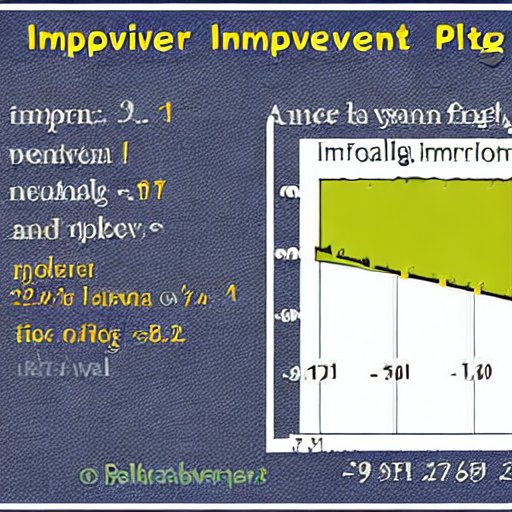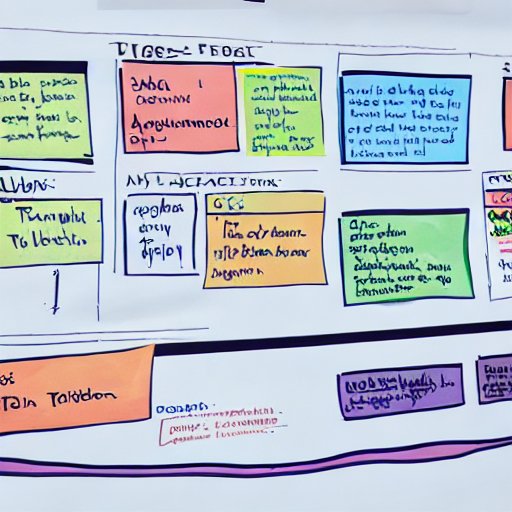Project management tools are an essential part of the translation industry, they are crucial for the success of any translation project. Understanding what tools are available and how to use them effectively is vital to streamlining the translation process and increasing efficiency. In this article, we will take a deeper look at the most common Project Management Tools in the translation industry, from computer-assisted translation tools to project management software, we will cover all the essential tools for managing a translation project successfully.
Here is a list of the most important tools to have in your toolbox:
CAT (computer-assisted translation) tools
CAT (computer-assisted translation) tools are an essential part of the translation process, as they help to streamline the work of translators and increase their productivity. These tools work by storing previously translated sentences and phrases, known as translation memories, which can be used to automatically retrieve translations for similar sentences in the current project. This reduces the amount of redundant translation work and ensures consistency in terminology and style throughout the project.
Some of the most popular CAT tools in the industry include:
- SDL Trados Studio: It is one of the most popular CAT tools in the translation industry, known for its advanced features such as translation memory, terminology management, and automated quality assurance.
- STAR Transit: It is a CAT tool that is mainly used by translation agencies and large corporations, it is known for its ability to handle large volumes of text, and it also has a multilingual user interface.
- MemoQ: It is an online CAT tool that is popular among freelance translators and small businesses. It offers a wide range of features, including translation memory, terminology management, and alignment.
- Wordfast: It is a CAT tool that is popular for its ease of use and customization options, it is suitable for small and medium-sized businesses.
- OmegaT: it is a free and open-source CAT tool that is popular among freelance translators and small businesses, it is known for its user-friendly interface, translation memory, and terminology management
- Smartcat: it is an online CAT tool, designed to help translation companies, freelancers and enterprise to streamline their localization process, it is known for its user-friendly interface, translation memory, and terminology management.
- Memsource: it’s a cloud-based translation management system, that offers translation memory, terminology management, machine translation and more, it’s popular among businesses and agencies.
All of these CAT tools provide translators with a range of features that can assist them in their work, such as translation memory, terminology management, and automated quality assurance. They also have the ability to handle a variety of file formats and can be integrated with other software, such as MS Office, Adobe InDesign, and more. The main benefit of using a CAT tool is that it can save translators time and money by reducing the amount of redundant translation work.
TM (translation memory) tools
Translation memory (TM) tools are a type of software that stores translations and can automatically retrieve them, saving time and money by reducing the amount of redundant translation work. They work by maintaining a database of previously translated phrases and sentences, which can then be reused in future translations. This can help to increase consistency, improve translation quality, and reduce turnaround times.
Here are a few examples of well-known TM tools:
- SDL Trados: A comprehensive CAT tool that includes a powerful TM feature, allowing users to leverage previously translated content and manage terminology.
- MemoQ: This tool provides advanced TM capabilities, including the ability to leverage translations from multiple TMs in a single project.
- Wordfast: A user-friendly tool that allows for easy TM management and provides a variety of options for leveraging previously translated content.
- SDL MultiTerm: A terminology management tool that can be used in conjunction with CAT tools to ensure consistency in terminology across multiple projects.
- XTM: A cloud-based TM tool that allows for easy collaboration and sharing of translation memories among multiple users.
- Memsource: A cloud-based CAT tool that features a built-in TM and advanced features for quality assurance, designed to increase translation productivity and reduce costs.
There is a difference between CAT (computer-assisted translation) tools and Translation Memory (TM) tools. CAT tools are typically used by translators to assist them in their work, such as by providing translation suggestions, automating repetitive tasks, and managing terminology. Translation Memory tools, on the other hand, focus on storing and managing translations and can be used to automatically retrieve translations that have been previously done, saving time and reducing the amount of redundant work. Both types of tools can be used together to streamline the translation process, but they serve different purposes.
Project management software
Project management software is an essential tool for the translation industry, it helps to plan, schedule, and track the progress of translation projects. There is various project management software available in the market that caters to the specific needs of the translation industry.
Some popular project management software in the translation industry are:
- XTRF: An advanced project management platform that is designed to manage translation projects, resources, financials and customer relationships.
- Plunet: It offers a comprehensive set of tools that help to automate the translation workflow, from project management to the delivery of the final translation.
- Smartling: A cloud-based translation management platform, that enables efficient translation workflows, It offers features like translation memory, machine translation, and collaboration tools.
- GlobalLink: A Translation management platform designed for enterprise businesses, it has features like translation memory, machine translation, terminology management and more.
- Phrase Strings: A web-based translation management platform, that helps to automate the localization process, it offers features like Translation Memory, terminology management, and collaboration tools.
- Unbabel: An AI-powered platform that offers human-quality translations, language-specific editors, and a project management system.
- Crowdin: A cloud-based translation management platform that allows users to manage translations, collaborate with translators, automate workflows and handle localization.
- Weglot: a platform that helps you to translate and optimize your website, it provides a visual editor, translation management, and a project management system
- Transifex: A web-based translation management platform that enables users to manage translations and collaborate with translators.
- EasyTranslate: A platform that streamlines the entire translation process from project management to delivery, It offers features like Translation Memory, machine translation, and collaboration tools.
- Wordbee: A cloud-based translation management system (TMS) that offers translation project management, translation memory, and machine translation tools. It also provides collaboration features such as in-context review, translation memories, and terminology management.
- MemoQ Server: A TMS that offers translation project management, translation memory, and terminology management. It also provides a centralized system for managing multiple MemoQ projects and users.
- SDL Trados Groupshare: A TMS that offers translation project management, translation memory, and terminology management. It allows for collaboration and sharing of translation memories and terminology databases among multiple users.
- Smartcat: A cloud-based TMS that offers translation project management, translation memory, machine translation, and collaboration features. It also has built-in workflows for freelance translators and agencies.
- Phrase TMS (formerly Memsource): A cloud-based TMS that offers translation project management, translation memory, and terminology management. It also offers a built-in CAT tool and supports multiple file formats.
- Lokalise: A cloud-based translation management platform that provides localization management, translation memory, and terminology management. It also offers features such as automated workflows, an in-context editor, and translatability checks.
- XTM Cloud: A cloud-based TMS that offers translation project management, translation memory, and terminology management. It also offers a built-in CAT tool and supports multiple file formats.
- POEditor: A cloud-based localization management platform that offers translation project management, translation memory, and terminology management. It also supports multiple file formats and can integrate with multiple development platforms and tools.
- Localize: A cloud-based translation management platform that offers translation project management, translation memory, and terminology management. It also supports multiple file formats and can integrate with multiple development platforms and tools.
- MotionPoint: A cloud-based platform that provides translation services for e-commerce websites, it offers translation memory, terminology management, and machine translation to boost the efficiency of the process.
- GlobalSight: An open-source TMS that offers translation project management, translation memory, and terminology management. It also provides a built-in CAT tool and can be integrated with other tools and systems.
- LingoHub: A cloud-based platform that provides translation management services, it offers translation memory, terminology management, machine translation, and collaboration features.
- TextUnited: A cloud-based TMS that offers translation project management, translation memory, and terminology management. It also offers a built-in CAT tool and supports multiple file formats.
- Cloudwords: A cloud-based translation management platform that provides translation project management, translation memory, and terminology management. It also offers integration with various technologies, such as Content Management Systems, E-commerce platforms, and other software
- Lingotek: A cloud-based TMS that offers translation project management, translation memory, and terminology management. It also provides a built-in CAT tool and supports multiple file formats.
- Localazy: Localazy is a localization management platform that streamlines the localization process by automating the translation workflow and integrating it with other translation tools. It includes features such as translation memory, machine translation, and terminology management. Additionally, Localazy also supports collaboration with external translators and localization teams.
- Across: A cloud-based localization management platform that streamlines the localization process, from translation to delivery. It offers a wide range of features such as automated workflows, real-time collaboration, and advanced analytics.
- Hercules: A web-based project management software for language service providers, providing a centralized platform for managing projects, resources, and finances.
- Protemos: A cloud-based project management software for the translation industry, it allows for easy project tracking, invoicing and financial reporting, client and vendor management, and more.
- eclypse: A project management platform designed for language service providers, it offers a range of features such as automated workflows, real-time project tracking, and financial management tools. It also offers the possibility to integrate with other translation tools like CATs and TMs, to make the translation process more efficient and streamlined.
Overall, there are many CAT tools available on the market, all of them with similar features and advantages, and each one with its own unique characteristics and disadvantages. It is essential to research and compare different options to find the best fit for your specific project needs and workflow. Keep in mind that some tools may be better suited for certain types of projects or industries, and it may be helpful to test a few before making a final decision.
Terminology project management tools
Terminology management tools are an important part of managing translation projects. They help to ensure consistency in the use of terminology and glossary across all translations, ensuring accuracy and saving time.
Some examples of terminology management tools include:
- SDL MultiTerm: A popular software that allows users to create and manage glossaries, as well as share them across teams.
- Wordfast Pro: A CAT tool that also includes a built-in terminology management function.
- TermWiki: A web-based tool that allows users to create and collaborate on glossaries in real time.
- evoTerm: A tool that enables integration, management and sharing of terminology data across teams and departments.
- Flashterm: A software that uses AI to help users find the right term for their translation.
- i-TERM: A software for managing and sharing terminologies, glossaries, and translation memories.
- Terminotix: A software for terminologists and translators, which offers a wide range of functionalities, from terminology management to terminology extraction and recognition.
- QTerm: A software that makes it easy to create and manage your own terminology databases.
- Termbase: An online terminology management tool that allows users to store, share and manage their glossaries and terminology.
- TermWeb: A web-based tool that allows users to create, manage and share terminologies, glossaries, and translation memories, as well as to collaborate with other users.
Quality assurance tools
These tools help to check for errors and inconsistencies in the translations and ensure that the final deliverable meets the required quality standards.
Commonly used quality assurance tools in the translation industry include:
- Xbench: This tool is widely used by translators and localization engineers to perform quality assurance on their translations. It allows for automated checks such as spell checking, terminology validation, and style analysis.
- XTM: This tool offers a comprehensive suite of quality assurance features including automated QA checks, real-time collaboration, and built-in terminology management.
- Memsource: This tool offers a variety of quality assurance features including automated QA checks, real-time collaboration, and built-in terminology management.
- Verifika: This tool is designed specifically for quality assurance in the translation industry, providing a wide range of automated checks for grammar, punctuation, spelling, and style.
- Grammarly: This tool is a widely used grammar and spelling checker, it also includes a plagiarism checker and a readability checker. It can be used by translators and language professionals to ensure the quality of their translations.
Cloud-based collaboration tools
Cloud-based collaboration tools are a vital aspect of modern project management, particularly in the translation industry. These tools allow team members to collaborate and communicate effectively, even if they are working remotely.
Popular cloud-based collaboration tools used in the translation industry are:
- Google Docs: A cloud-based productivity suite that allows team members to create, edit, and share documents, spreadsheets, and presentations in real-time.
- Slack: A team communication tool that allows for instant messaging, file sharing, and more.
- Zoom: A video conferencing platform that enables remote team members to communicate face-to-face in real-time.
- Dropbox: A file hosting service that allows team members to share and access files from anywhere.
- Wetransfer: A cloud-based service for sending large files and folders via a link, for easy access and sharing.
Conclusion
As a professional in the translation industry, we at Slavis Translations have a wealth of experience in using project management tools to help manage the various aspects of translation projects. We know that managing a translation project can be a complex and challenging task, but with the right tools, it can be made much easier.
One of the main reasons why many translation agencies are turning to outsource their project management is because of the wide range of tools available to us. From the management of resources and timelines to tracking progress and performance, these tools allow us to streamline our operations and deliver projects on time and within budget. At Slavis Translation Bureau, we have a proven track record of utilizing these tools to deliver top-quality project management services for our clients. We understand the specific needs of the translation industry, and our team is well-equipped with the skills and knowledge to provide excellent service. Outsourcing to us means that you can focus on what you do best, translations, while we take care of the project management.




